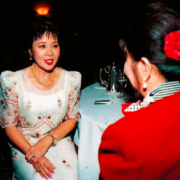The practice of medicine is an arduous and complex human profession.
One doesn’t need training in medicine, in order to make cogent and crucial experience about what it’s like to be sick and vulnerable, to witness and record the excruciating isolation and alienation that come to all patients.
In this era of managed health care, when medicine is becoming more institutionalized and impersonal, malpractice hangs in every physician’s head.
It influences his/her treatment decision. Doctors are prepared to face life and death issues, through temperament and training.
Dr. Carola Eeisenberg asked: “But doesn’t this reflect as a puzzling loss of perspective, to lose sight of just how lucky they are to have a profession in which they do well for others? The satisfaction of being able to relieve pain, the intellectual challenge of solving the variety of human issues that confronts in their daily clinical practice remains the essence of doctoring, whatever changes in the organizational and economic structure of medicine?”
It is this humanity in medicine which has inspired countless writers. Doctors and non-doctors alike wrote about issues, concerns and challenges which face doctors and patients: what it’s like to be sick, to be cured or to triumph. In full spectrum, it shows the breadth and wonder of the medical profession.
It’s been said that William Carlos Williams, Anton Chekov, W. Somerset Maugham and Lewis Thomas are only few of physician-writers, who relied on their medical background to help them understand better the frailty, strengths and wonderment of the human condition.
The romantic poet John Keats did a five-year apprentice with a surgeon and delivered so many babies.
Both medicine and literature have the capacity to affect the quality of a human day. The written word gives the doctor timbre, voice and diction.
The surgeons
The Kay Medical Group for Cardio Vascular and Pulmonary Surgery at the Good Samaritan Hospital wear their scrubs as though they were black tie and tails.
Inside the operating room, as stillness settles into the surgeon’s heart, silence, dignity and awe envelope their beings.
Laid beneath great lamps, the patient lies down in complete surrender, yielding to the surgeon with unbearable anxiety.
Gowned, hooded, masked and gloved, with steel cutlery of unimaginable versatility and a scalpel handled with excruciating skill, the team is headed by Dr. Greg Kay with Dr. Antonio Roces Abiog and Dr. Salami.
At the Patriotic Hall for WWII Veterans
The “attending” physicians who have given support for veterans: Dr. Antonio Roces Abiog, Dr. Edgar Banez, Dr. Manuel Baculi, Dr. Semense, Dr. Noli Zosa, Dr. Jess Licuanan, Dr. Salumbides, Dr. Jessie Romero, Dr. Ebilami.
They are regulars at the Patriotic Hall, where Dr. Jenny Batongmalaque took care of the aging and the Filipino Veterans Foundation.
Dr. Norma Cunanan Salceda, perhaps the most famous OB-GYNE who lives in Beverly Hills, has delivered babies for Boxer Champ Manny Pacquiao.
She still maintains clinics in Los Angeles and in San Fernando Valley, where most of her patients are indigent, perhaps below poverty. No one is ever turned away.
“The fear of lawsuits isn’t just theoretical — malpractice really exists, but delivering babies is my vocation, that gives me more joy than anything else…bringing out life in this world. My skills are honed on these…even soaring malpractice cannot reshape my relationships with my patients,” she said.
Dr. Germosita Macabenta Tenazas, in an interview years back, told me that she was in that genre where being a woman in the physicians’ world is an obstacle.
She said it made her uncomfortable and gave her inferiority complex. It was a time when discrimination for women doctors were up to high heavens – when she dropped dead from sheer exhaustion, working 36 hours.
“I was suspended…but I told myself, if this doesn’t kill me, it will make me stronger. Today, much of these had already lifted,” she said.
Based on my recent conversations with doctors during medical events we’ve attended, most doctors practicing medicine here are disillusioned and demoralized, as they see managed care hassles growing and compensation shrinking — with every patient a potential plaintiff.
The weight of sky-high malpractice insurance, burdensome paperwork, long nights of being on-call deprives you of time for your family. It dampens enthusiasm and the fix-it aspect of medical practice is no longer definitive.
There was a time when medical practitioners used to be energized and inspired to help people with desperate medical needs.
Now, thankless patients are ever-ready with lawsuits. Doctors are being pulled away from a healthy patient-doctor relationship by economic forces and by a disrespectful situation, where they are being devalued.
Even if a doctor is vindicated, it still takes years for a lawsuit to wind its way through the system.
This gives one a mixture of feelings, because these candid admissions, spoken with reckless sincerity, are true.
In the end, it is the humdrum, day-in, day-out work that gives real satisfaction to the practice of medicine.






